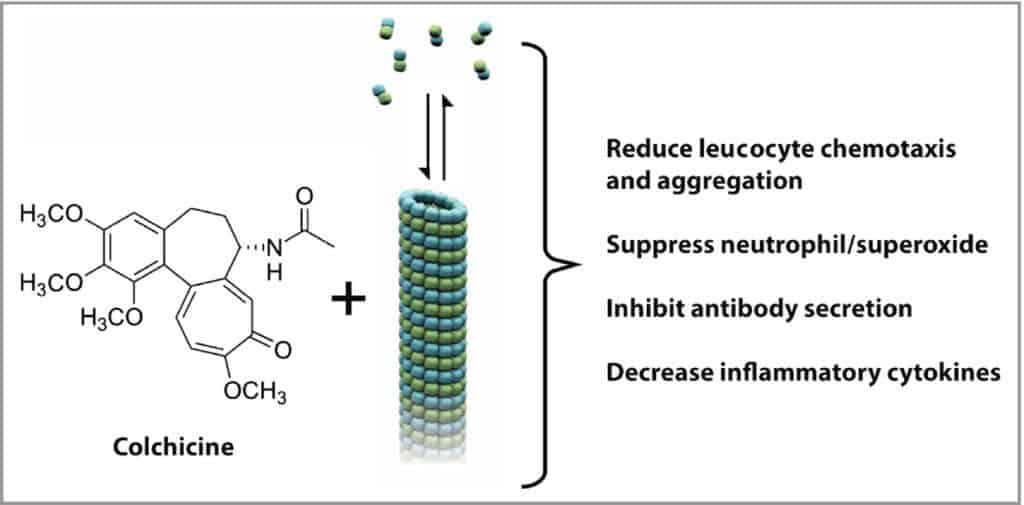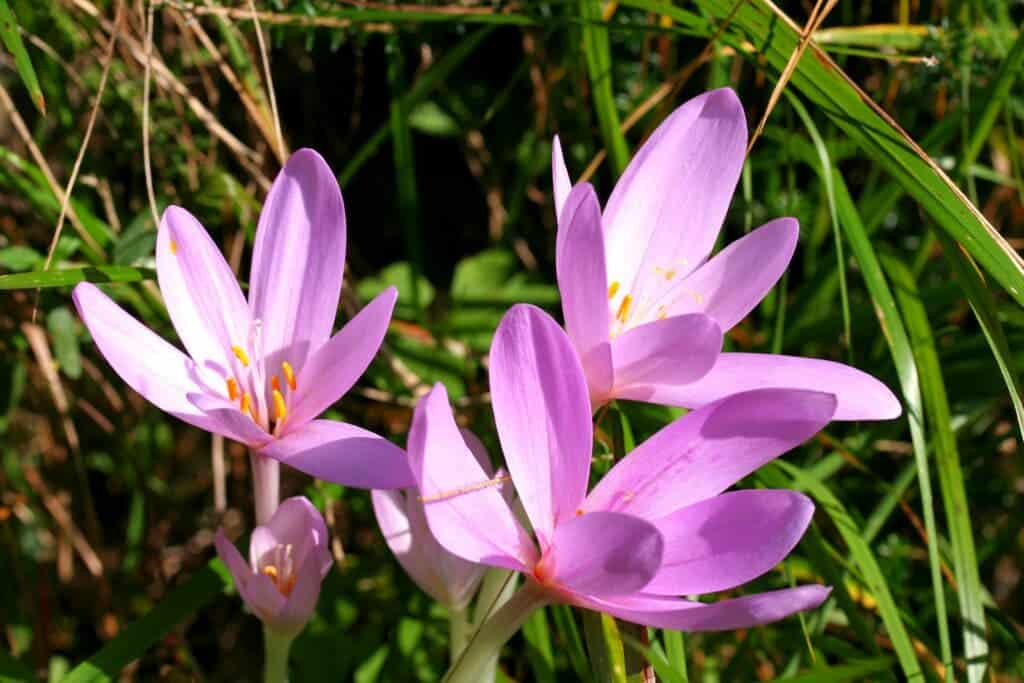A small randomized, double-blind clinical trial published in RMD Open showed colchicine to be safe and effective in treating moderate to severe COVID-19 infections in hospitalized patients. In the study, patients who took the inexpensive drug required supplemental oxygen and hospitalization for less time. This is the first randomized controlled trial (RCT) on colchicine for COVID-19.

Colchicine is most commonly used to prevent attacks of gout or pseudogout arthritis, which are types of arthritis caused by a buildup of crystals in the joints. Blood cells travel to these areas of inflammation, causing pain and swelling. Colchicine prevents white blood cells from traveling into these areas and therefore helps to reduce pain and tenderness.
Colchicine can also be used to treat acute attacks when nonsteroidal anti-inflammatory drugs (NSAIDs) such as naproxen or ibuprofen cannot be used for safety reasons or have been ineffective. Colchicine is an alkaloid naturally occurring in Colchicum autumnale a plant of Liliaceae family.
Now, it has also been shown to be effective against COVID-19.

From April 11 to August 30, 2020, 72 Brazilian patients received either a placebo or 0.5 milligrams of colchicine three times a day for 5 days followed by the same dose twice a day for 5 days in addition to a standard COVID-19 treatment of azithromycin, hydroxychloroquine, heparin, and (after the RECOVERY Collaborative Group results were announced) glucocorticoid. Methylprednisolone was given if supplemental oxygen was 6 liters per minute or higher.
The most common side effect was diarrhea (16.7%), and colchicine doses were adapted if the patient weighed at least 176 pounds (80 kilograms) or had chronic kidney disease. Those on colchicine needed oxygen for an average of 4 days and stayed in the hospital for an average of 7 days; whereas, the control group needed oxygen for 6.5 days and stayed 9 days. The drug’s effect on ICU admission or mortality rate was not quantified, although the researchers note that 1 patient in the colchicine group went to the ICU compared with 3 in the placebo group. Two patients died in the study, both in the placebo group.
While the researchers acknowledge these results are not yet generalizable (34 of 35 patients receiving colchicine were overweight or obese), they concluded colchicine’s ability to slow systemic inflammation is promising. Systemic inflammation is the hallmark of hospitalized patients due to COVID-19. There is no specific treatment but supportive care and attempts to control the immune activation improve the clinical picture. By diminishing the activation of leucocytes, colchicine may be an intervention worthy of being tested further in more patients.






